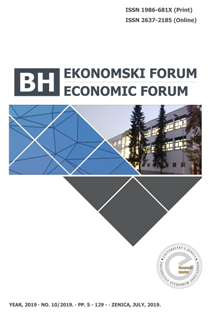GOVERNMENT’S EXCESSIVE SPENDING AND PRIVATE SECTOR’S ACCESS TO BANK CREDIT: EVIDENCE FROM THE REPUBLIC OF NORTH MACEDONIA
GOVERNMENT’S EXCESSIVE SPENDING AND PRIVATE SECTOR’S ACCESS TO BANK CREDIT: EVIDENCE FROM THE REPUBLIC OF NORTH MACEDONIA
Author(s): Nina Mojsova Kjoseva, Martin NoveskiSubject(s): Government/Political systems, Economic development, Financial Markets, Fiscal Politics / Budgeting
Published by: Ekonomski fakultet - Univerzitet u Zenici
Keywords: Budget balance; domestic credit to private sector; VECM model; co-integration; causality;
Summary/Abstract: Due to the crucial role of credit in the economic activity of a country, there is a growing empirical literature examining the determinants of domestic credit to the private sector, which may be demand-side or supply-side factors. It is commonly held that excessive domestic debt reduces private sector credit, raise bank lending rates, and shrink output as the Government competes with the private sector for private savings. For this reason, the aim of this paper is to determine whether persistent budget deficit in the Republic of North Macedonia negatively affects the private sector’s access to bank credit, and hence slowing down the economic activity. The analysis considers both, short-run and long-run relationship between domestic credit to private sector provided by banks and budget balance in North Macedonia, as endogenous variables, but also it takes into account the influence of several other exogenous factors. The methodological approach is consisted of visual inspection of the data, correlation analysis, co-integration and causality tests, as well as estimation of the impulse response function and variance decomposition. Based on the estimated VECM model, the results show statistically significant long-run relationship between the endogenous variables, and no short-run causality in any direction.
Journal: BH ekonomski forum
- Issue Year: 2019
- Issue No: 10
- Page Range: 41-52
- Page Count: 12
- Language: English

